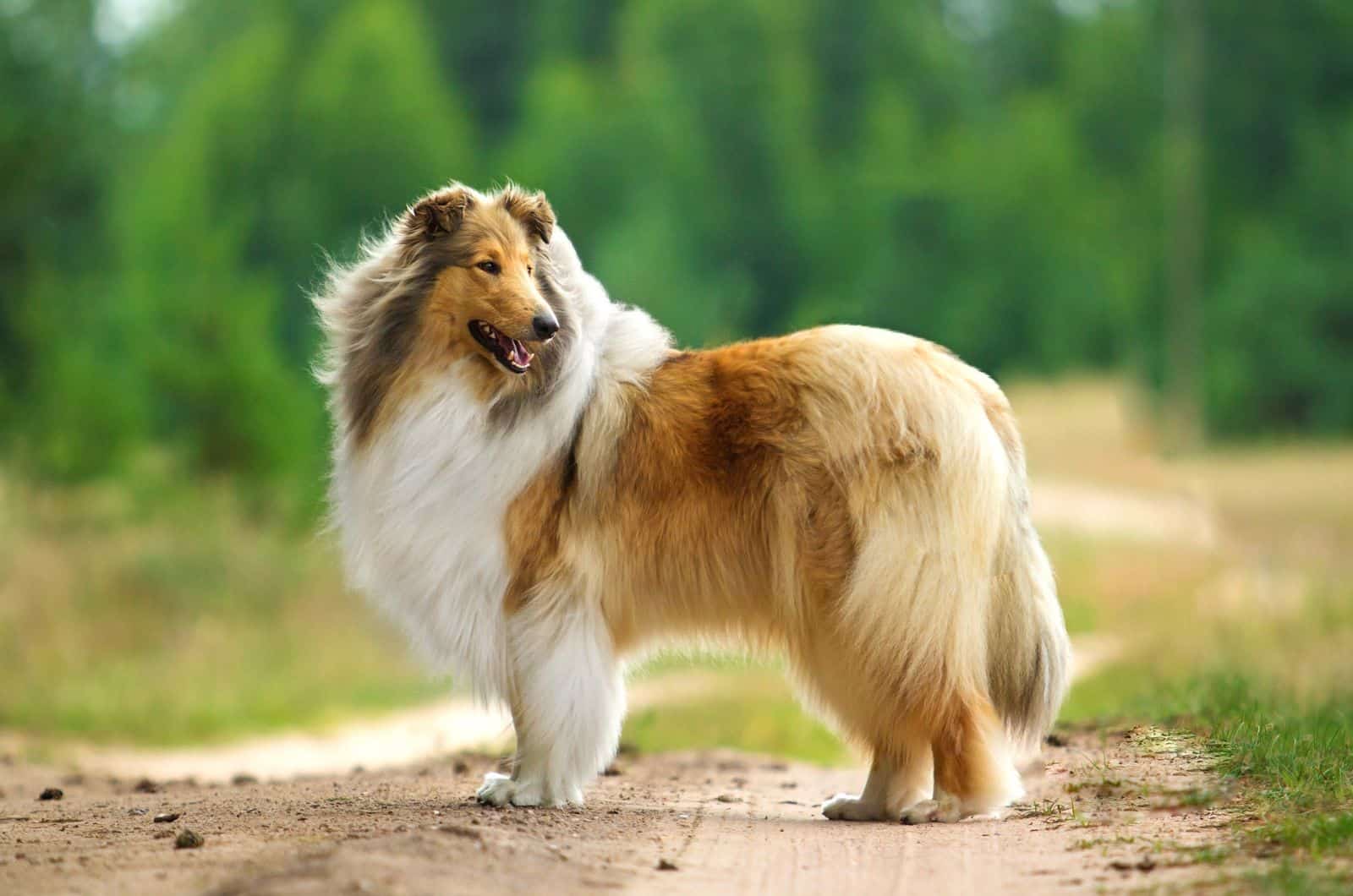Have you recently acquired a Rough Collie puppy? Do you want to know how large your Rough Collie will get and when it will stop growing? Or perhaps you’re interested in finding out if your Collie is the right weight for its age.
Whatever your concerns might be, this Rough Collie growth chart will certainly answer them. It contains valuable info about the size of a Collie puppy throughout its various stages of development.
Additionally, we will address all pertinent concerns regarding Collie‘s weight gain and growth in this post.
By ensuring that your dog has a healthy weight and growth, you can extend its life. Last but not least, keeping tabs on your Collie‘s weight and growth will allow you to determine whether or not he or she has any underlying medical issues.
This remarkable breed is instantly recognized by its stunning, multicolored coat of long, rough-textured fur.
The rough-coated Collie’s head is a smooth, exquisite wedge shape, and its long, lovely coat flows as it runs. Rough collies can thrive in both rural and urban environments, but they want company and regular runs or long walks.
So, without any further ado, let’s take a look at the Rough Collie growth chart that shows us the rate of growth and weight gain for male and female Collies throughout their life.
Rough Collie Growth Chart
[table id=682 /]
Rough Collie Growth Rate Chart
The following chart shows the rate at which a Rough Collie puppy grows from the time it is three months old until it’s eight months old.
As you will be able to conclude from the table, Collie pups start off with a very high weight growth rate, gaining over two pounds per week for the first several months. This is usually the case for a lot of dogs, particularly small and medium-sized ones.
However, as time goes on, the growth rate gets smaller until they eventually stop growing altogether and reach their full adult weight.
[table id=683 /]
What Is A Rough Collie
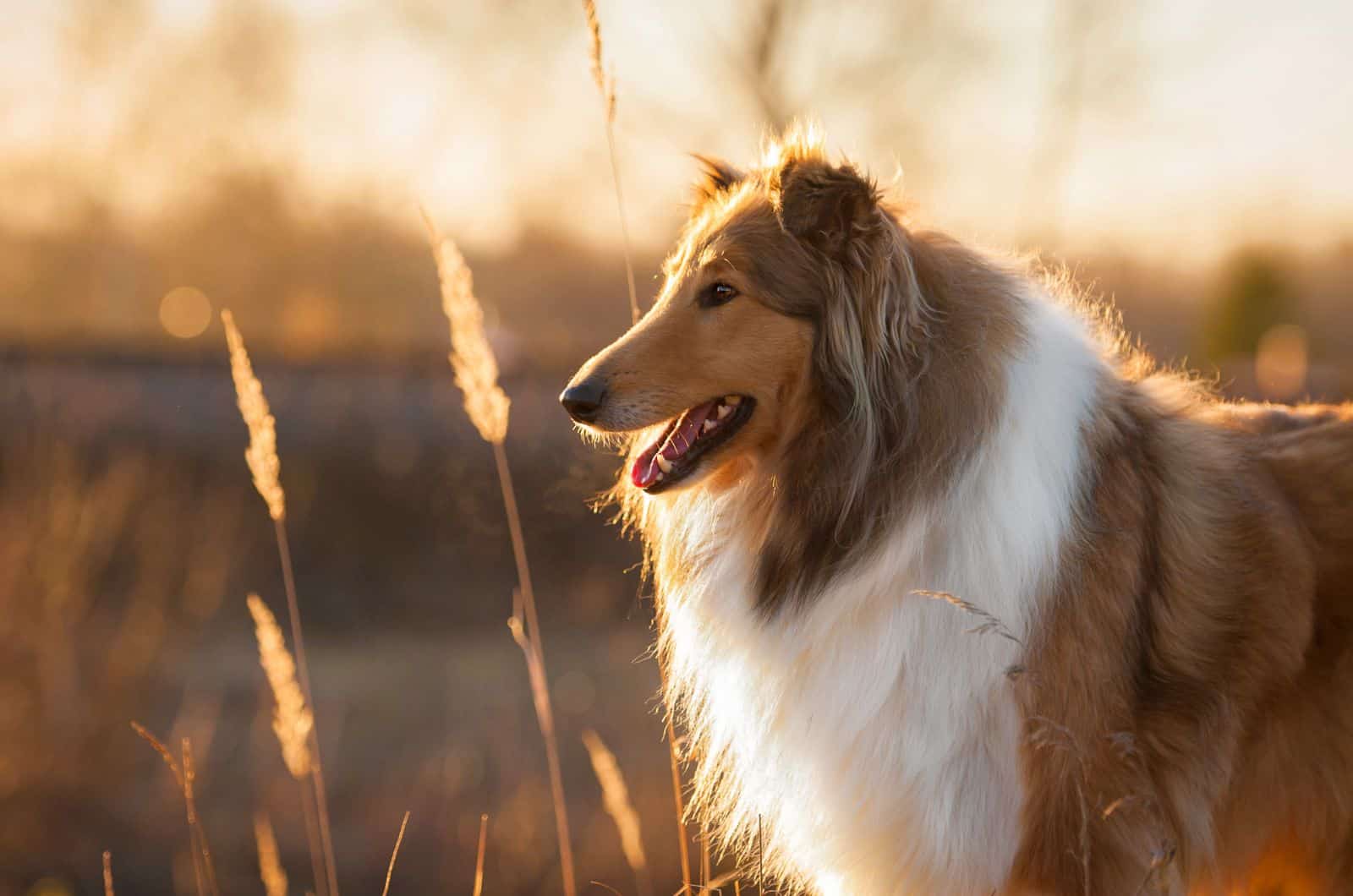
The Rough Collie dog breed, often referred to simply as Collie, was formerly used as a herding dog in Scotland and Northern England.
The history of the Collie has been significantly influenced by Queen Victoria’s passionate love for the Scotland-bred canine.
The indigenous herding breed gained popularity thanks to dog-loving Queen Victoria during her numerous extended visits at Balmoral Castle in the Scottish Highlands.
The most recognized Rough Collie personality feature is their commitment to their owner, followed by their fondness for children. They are well known for their intelligence and ease of training.
These fundamental qualities made the Rough Collie dog the ideal breed to play Lassie, the adored family TV program canine who constantly saved the young human boy, Timmy.
Whether it’s because of Lassie or not, the breed has maintained a constantly high level of popularity among dog owners all around the country, which is proven by its 38th place on the American Kennel Club’s list of the most popular breeds.
Rough Collie dogs are described as being powerful, devoted, caring, quick-witted, and attentive. They are a breed of dog well-known for their herding and guarding skills.
Even though they are not as active as Border Collies, Rough Collies still require at least 45 to 60 minutes of daily outside activity. However, once they get back inside, they are very relaxed and content to relax with their owner.
How Big Do Rough Collies Get?
As you can see from the Rough Collie growth chart presented above, adult male Collies reach weights between 49 and 89 pounds, while females are between 44 and 79 pounds.
As you can see, there isn’t a world of difference in weight between the genders, even though females are typically closer to the lower end of the scale.
Generally speaking, the larger a dog breed is, the more visible the difference is between males and females, and since Collies fall in the medium-sized category, the discrepancies aren’t too obvious.
Similar is true for Rough Collie’s height, as well, with males generally being between 24 and 36 inches tall at the withers, and females being a couple of inches shorter, namely between 22 and 24 on average.
When Do Rough Collies Stop Growing?
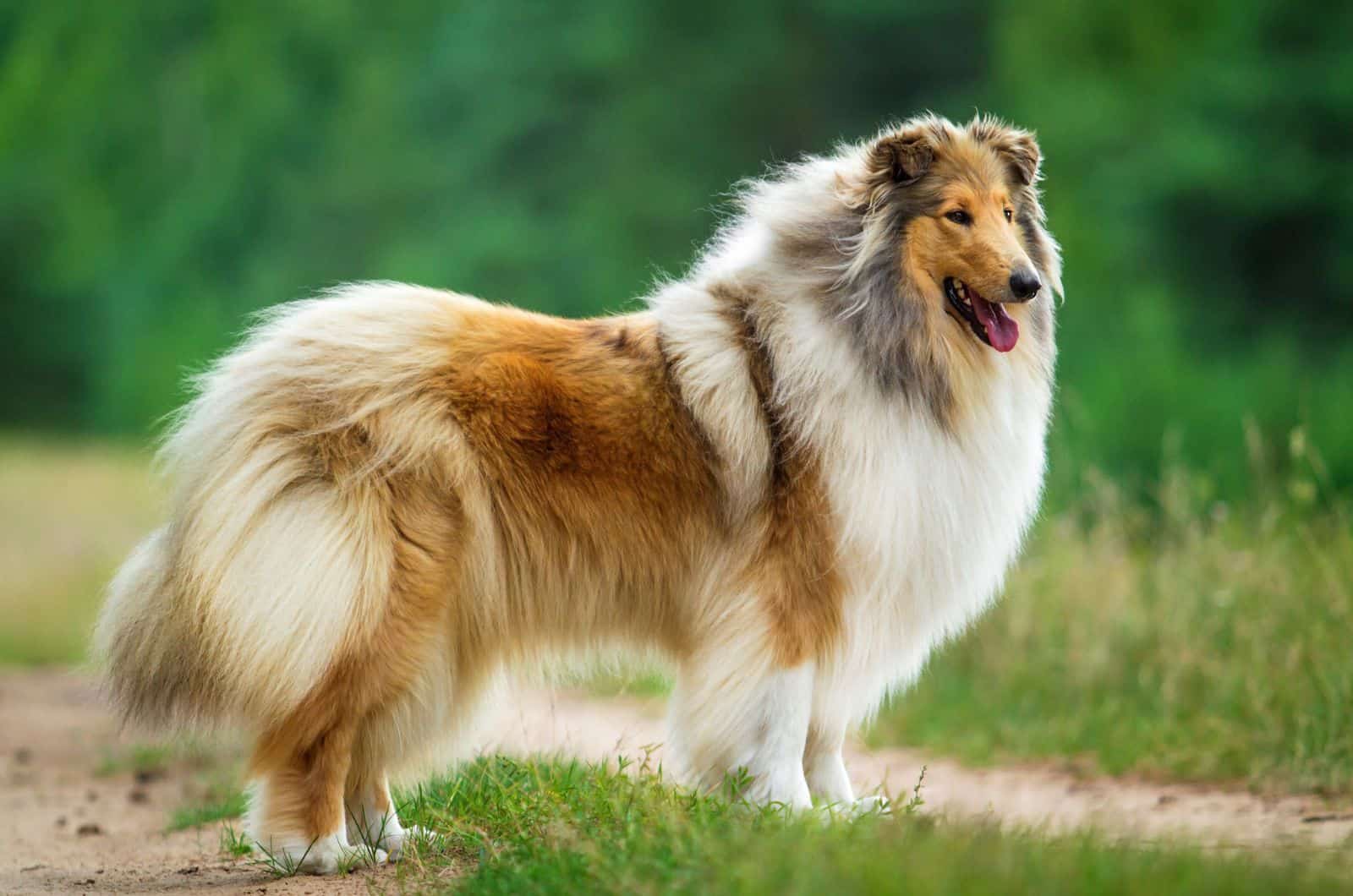
While larger dogs could take up to 18 months, or even two years to reach their mature weight, small dogs typically require nine months to get there.
So, with Rough Collies being somewhere in between large and small dogs, the question is, when do they reach adult weight?
Rough Collies often reach their maximum growth as they mature and finally grow to adult size. Most Rough Collies typically attain their peak growth at around 15 months of age.
Larger Rough Collies, on the other hand, may take up to 18 months to fully develop their chests and attain full maturity.
Male Vs. Female Rough Collie
When it comes to the issues of growth, size, and weight, there isn’t a lot of difference between female and male Rough Collies.
Typically, females tend to be slightly lighter and shorter on average, with their adult weight being between 44 and 79 pounds, and adult height between 22 and 24 inches.
On the other hand, males have an average adult weight of 49 to 79 pounds, and an average adult height of 24 to 26 inches.
As you can see, the differences aren’t that drastic. Females are usually toward the lower ends of the height and weight ranges, but there are cases of Collie girls being just as big as boys.
Differences between the two sexes are perhaps more notable in the growth rate and in the body frame itself.
Males grow a little bit faster in the early months, but since they have more muscle mass to develop, females usually catch up with them by the time they are 15 to 18 months of age.
Furthermore, male Collie’s body is more muscular, and they have slightly taller and longer frames.
Rough Collie Vs. Smooth Collie
The most common Collie dog that comes to mind when someone mentions a Collie is the well-known Lassie. The TV star was a long-haired Rough Collie, but the same breed can also come in a different variety, commonly known as Smooth Collie.
Collie breeds can be categorized as either having a rough or smooth coat. The coat’s length is the only distinction. The rough variety has a soft, furry undercoat underneath a dense, straight, coarse outer coat. The smooth variety lacks the rough exterior.
Rough Collie Vs.Border Collie?
Do you know the difference between a Border Collie and a Collie? In reality, these are two different dog breeds. The Border Collie is a heeler dog smaller than the Rough Collie, the breed that appears in the well-known television program “Lassie.”
Collies and Border Collies differ significantly in a number of important ways. The Border Collies are a working and herding dog breed that originated in the United States.
In contrast, the Rough Collie is a medium- to large-sized herding dog breed that originated in Scotland.
While there are notable differences in their appearance and personality, this is an article about growth and size, so let’s focus on that.
A Border Collie is generally between 19 and 22 inches tall, while a Rough Collie is between 24 and 26 inches tall.
When it comes to weight, Rough Collies can weigh up to 70 pounds, while Border Collies are significantly lighter, usually weighing between 27 and 45 pounds.
Rough Collie Puppy Development
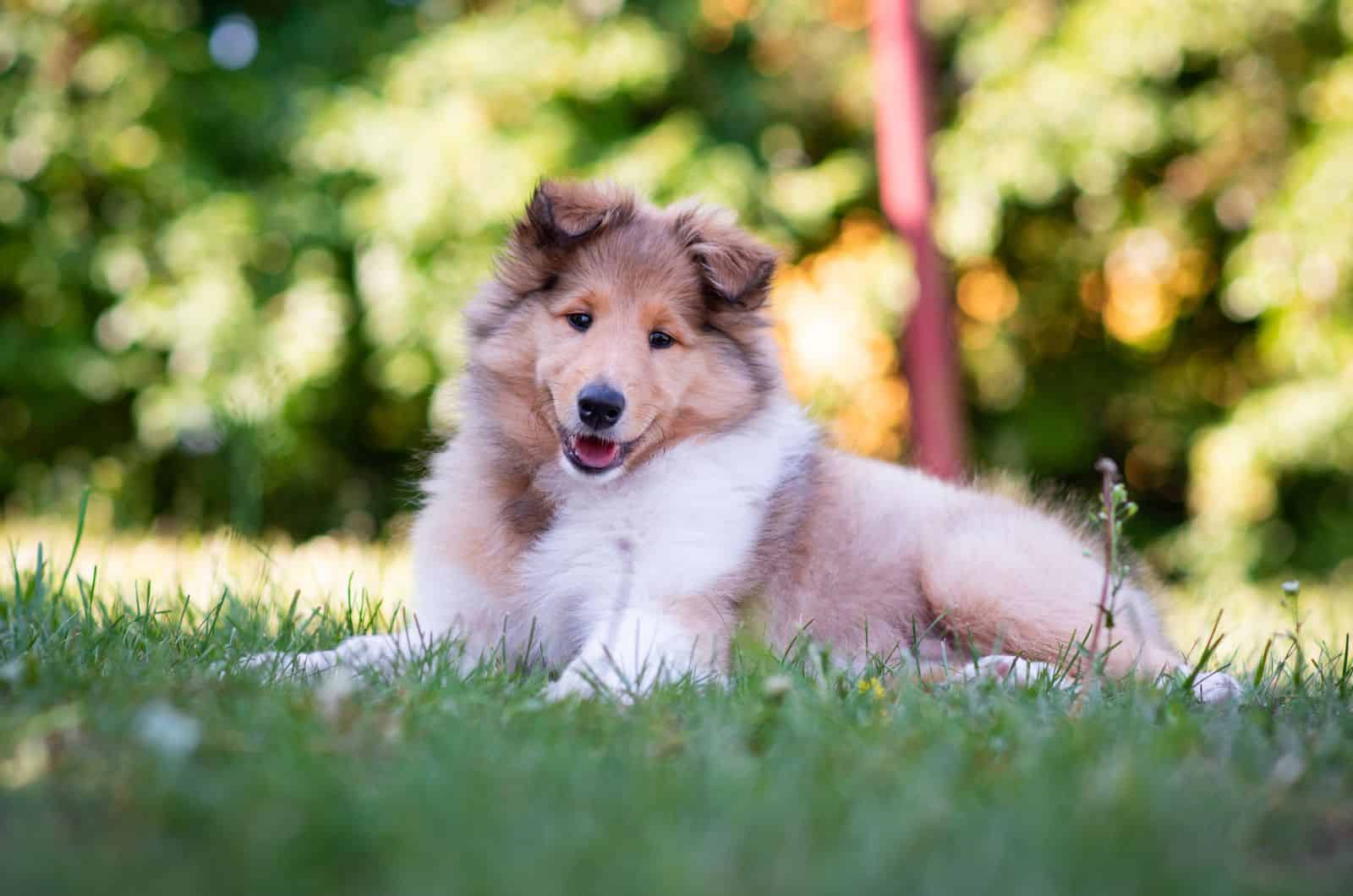
On its path to adulthood, your Collie will pass through a number of developmental phases. The growth pattern of your Collie can be divided into six separate stages.
Those stages are commonly known as neonatal, transitional, socialization, juvenile, adolescent, and maturity.
Knowing what to expect in each of these periods will help you design a working puppy routine schedule.
Neonatal Period
Collies are a medium-sized breed, but they won’t weigh much when they’re born. However, their relatively high growth rate will make them bulk up fairly quickly.
Puppies at this age will not have teeth, they will be blind and deaf, but they will have a sense of taste and touch. They will grow and develop quickly because their only activities will be nursing and napping.
They won’t need much of your attention at this point in time.
Transitional Period
The Collie puppy will continue to improve its senses of taste and hearing at this stage. The puppy’s eyes will start to open and its teeth will start to protrude.
At this period, the Collie puppy starts to stand up, crawl forward and backward, and wag its tail. Additionally, your puppy’s personality starts to emerge at this age.
Socialization Period
This is the beginning of a phase of transition in Collie’s puppyhood, a time when they experience many changes.
When your puppies are three weeks old, they should perk up and begin to interact more. They’ll explore more and have more fun with their siblings.
Since they will begin to have some control over their bladder, they ought to be able to get up and go potty independently.
They can begin proper potty training by the time they are eight weeks old, and they can begin learning fundamental commands by the time they are nine weeks old.
The Collie puppy also learns how to behave like a dog during this period, including the art of barking, biting, chasing, etc.
At this stage, the Collie puppy is rapidly learning and socializing, and what it learns now will have a lasting impact on how the puppy behaves as an adult.
They should be about 20 to 29 pounds in weight at this point in terms of size.
Juvenile Period
By the time it is four months old, your Rough Collie may weigh anything from 27 to 38 pounds. Your puppy will start chewing on anything he can get his mouth on as soon as teething starts.
This suggests that your dog will also start losing its baby teeth and replacing them with adult teeth.
The Collie puppies will make an effort to define and settle their boundaries at this time.
It’s essential to keep safe, chewable toys close hand to prevent your puppy from being destructive and biting on whatever they can get their teeth into, including you. Collies don’t tend to be aggressive by nature, but they occasionally become agitated.
You must keep your puppy active and stimulated to help keep him as healthy as possible.
Adolescent Period
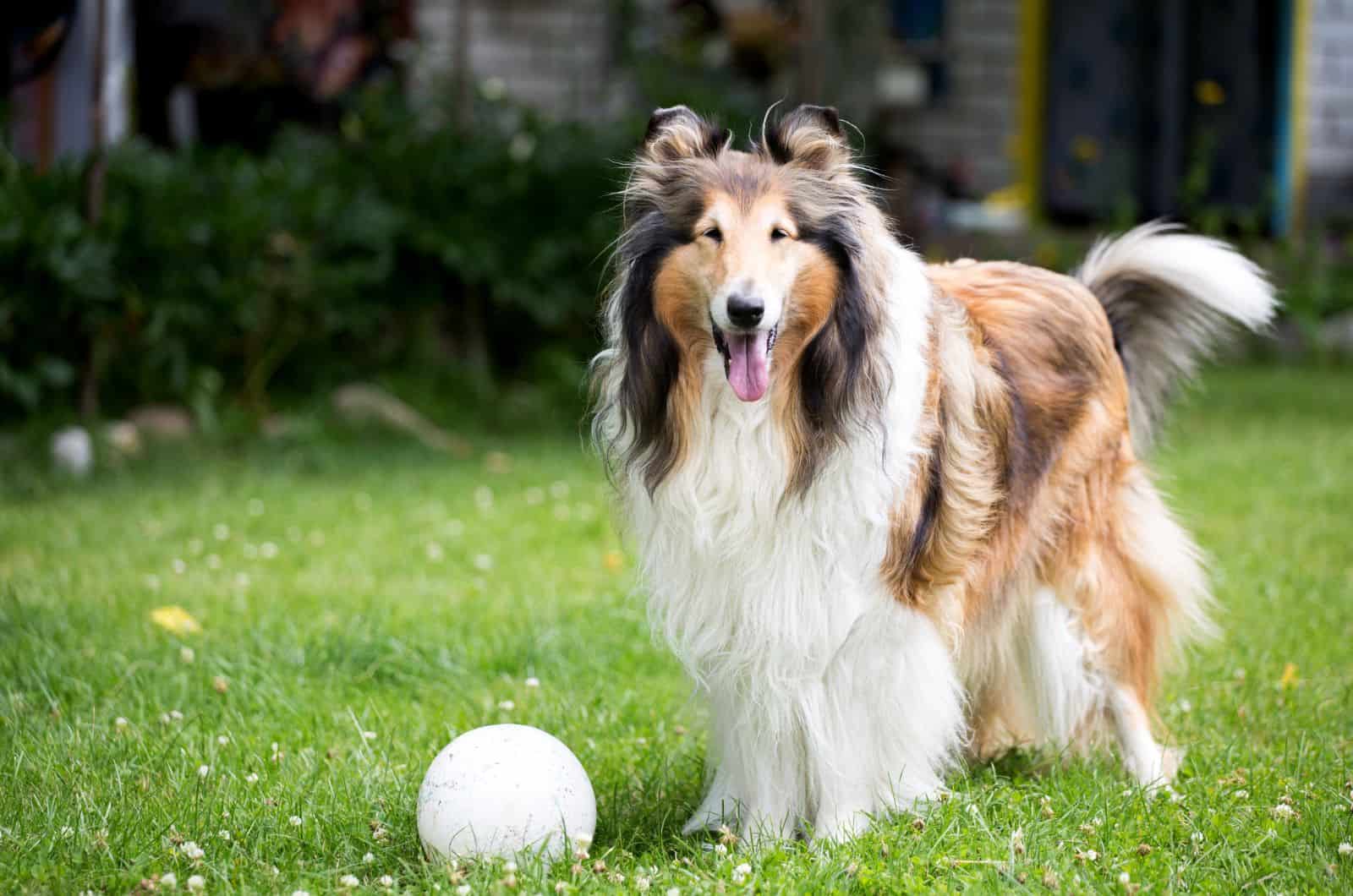
This period of development is referred to as puppy adolescence because during this stage, Collies reach social and sexual maturity.
This is a very challenging time for any dog owner, as their pets will be as active as ever and you will need to pay extra attention to them. However, it will pass with time and they will eventually calm down.
By the time they are 15 months old, the majority of Rough Collies are close to adult weight and have developed their entire physical structure. Some of them, though, can still add a little more muscle and weight after this point.
While that is quite acceptable, you should monitor your dog to make sure it doesn’t gain weight too much.
Give Collies plenty of opportunities to exercise because they enjoy being active because of their herding heritage.
Maturity Period — Adult Rough Collie
Most Rough Collies reach their growth peak and attain full adult size around the age of 15 months.
On the other hand, larger Rough Collies may take up to 18 months to fully mature and develop their chests.
Collies can weigh between 44 and 79 pounds for females and between 49 and 89 pounds for adult males. In terms of height, males typically stand between 24 and 26 inches tall at the withers, while females typically stand between 22 and 24 inches tall.
For reference, that is taller than an American Staffordshire Terrier, but not as tall as a Cane Corso.
Factors That Determine Rough Collie Growth
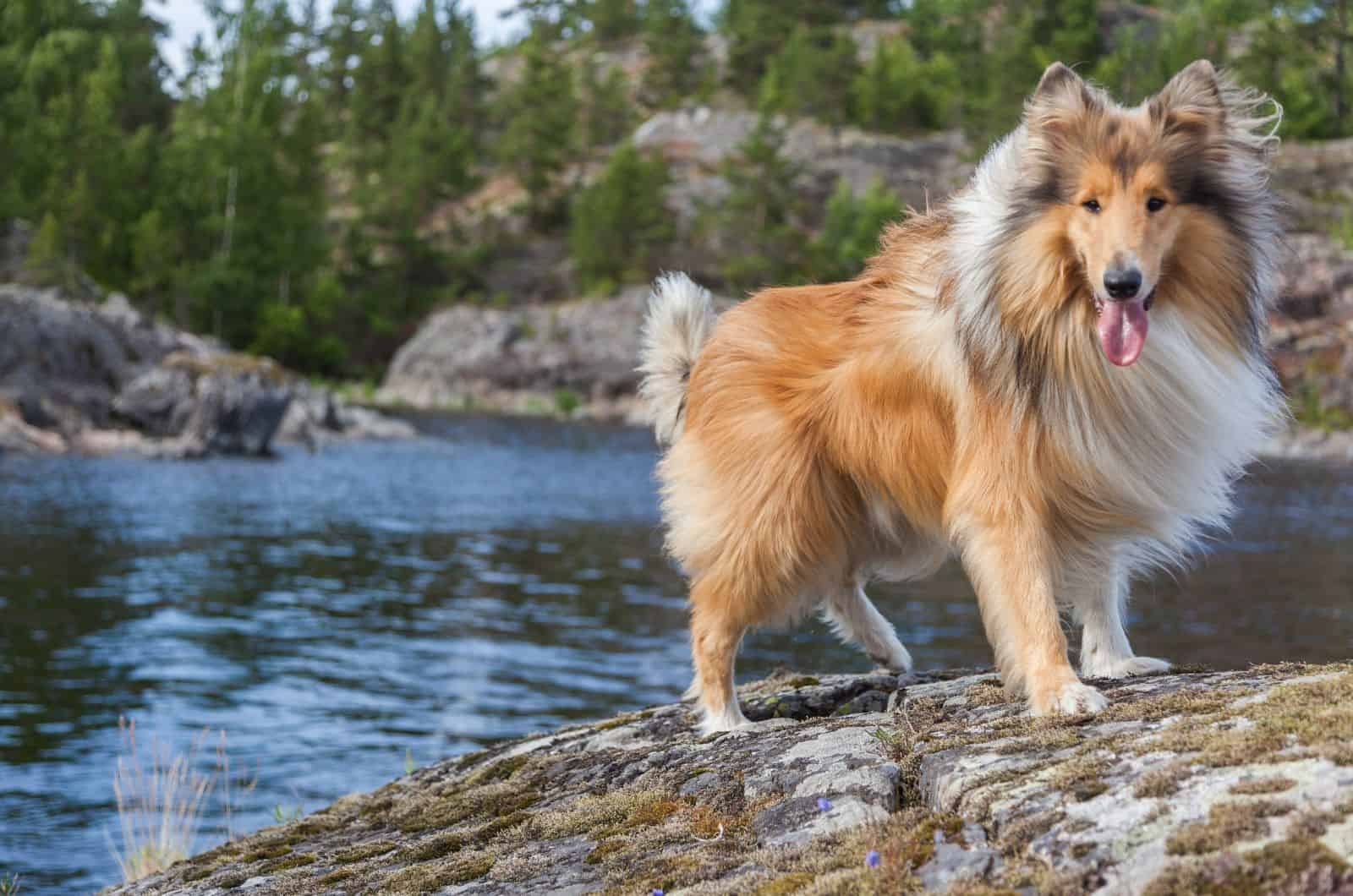
Not every Rough Collie will end up being the same height and weight, though there is a general average range associated with the breed.
This is because there are so many different factors that ultimately govern the development of the puppies, making it difficult to predict their growth to within an inch or pound.
If you have a better understanding of what the most crucial elements are, you might even be able to have some influence over your puppy’s growth. In some cases, it might even help you spot the first indications of irregularities or health issues.
These elements can be roughly divided into two groups: internal and external.
The genetic makeup and gender of a Collie are the two primary internal factors that influence its growth.
There is nothing you can do to alter or influence what mother nature has given the young pup. However, being aware of these facts and how they affect puppy development can help you plan ahead and foresee some situations.
There are additional environmental influences that are independent of Collie’s innate characteristics.
You can use these external variables, over which you have complete control, to keep your dog’s weight within acceptable ranges.
As you might have suspected, feeding and exercise are the two main environmental factors that affect Collie’s growth.
Gender
As with a lot of animal species, and humans as well, there are visible physical differences between the two genders of Rough Collies.
Females typically weigh between 44 and 79 pounds and have adult heights between 22 and 24 inches. They are slightly shorter and lighter than their male counterparts.
Males, on the other hand, typically weigh between 49 and 79 pounds and stand between 24 and 26 inches tall as adults.
Males grow a little bit faster in the early months, but by the time they are 15 to 18 months old, girls usually catch up to them since males have more muscle mass to mature.
Later on, there may be additional weight disparities determined by gender.
For instance, your female Collie’s weight will change significantly during the course of her pregnancy and delivery of puppies. She might also go through puppy blues, which could affect her appetite and weight.
Genetics
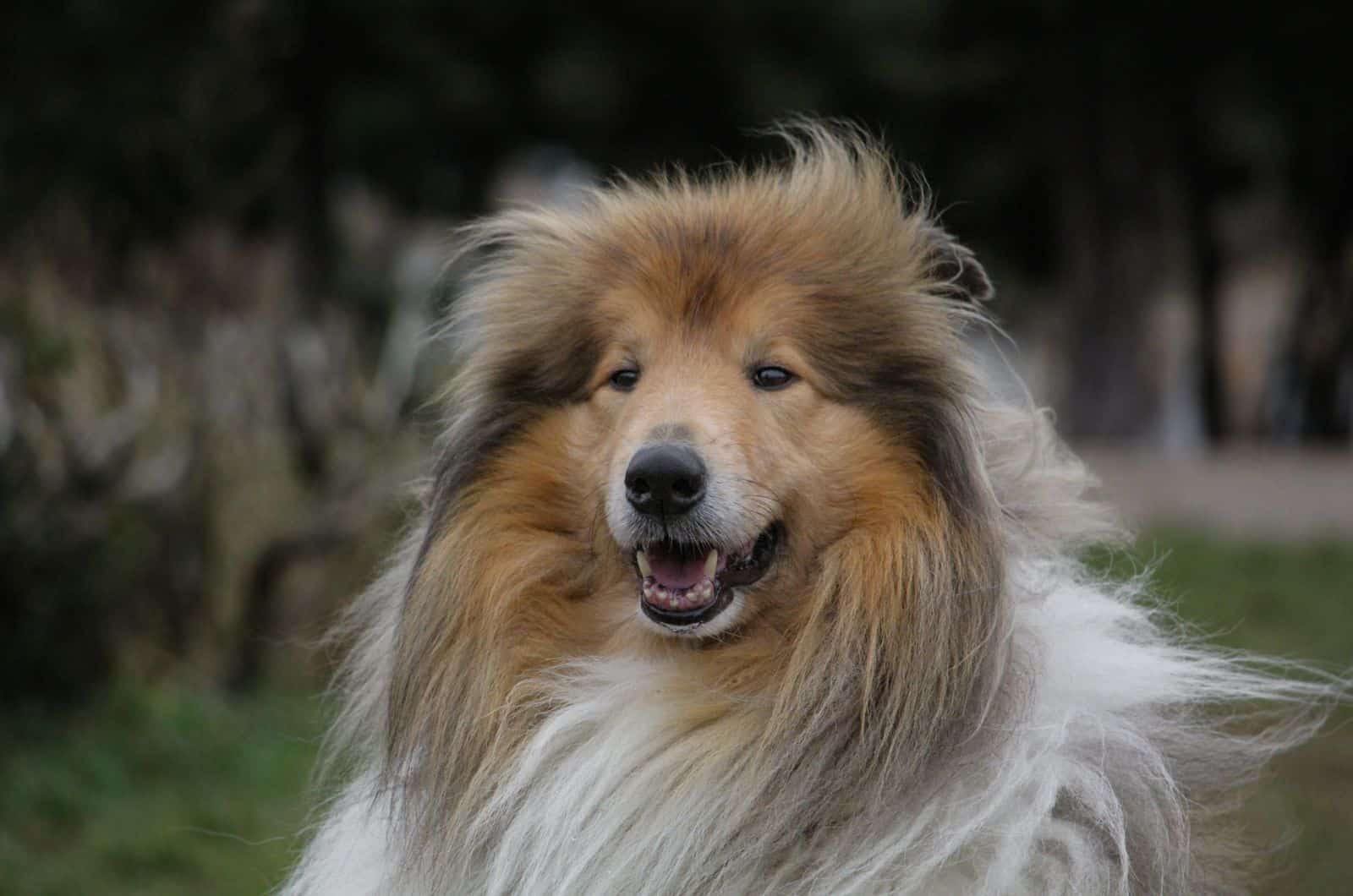
Your dog’s genetic makeup and health will be influenced significantly by its biological parents, as well as other ancestors further up the family tree.
In general, there is a considerable likelihood that your Collie puppy will be sizable if its parents were larger dogs. In contrast, the puppy will probably be smaller if the parents were smaller themselves.
Obviously, there are no guarantees and there may be exceptions, but it’s still a good general rule to have. Particularly considering that Rough Collies are purebred, which makes estimating their size simpler than is the case with mixed-breed puppies.
Genetics can affect a variety of other traits in addition to size, such as the puppies’ health.
Diet
The first step a Collie owner can take to ensure their pup grows properly is to give them healthy nutrition. Collies thrive on premium dog food that is mostly made from meat and contains fewer grains.
Collies should not be fed diets that have maize or soy as the main ingredients, according to many breed specialists.
Collies should be fed at least twice every day in order to reduce the risk of bloat. It has also been demonstrated that including meat in the meal lowers the risk of this illness.
Physical Activity
This breed is suited to both urban and rural situations as long as they can get enough exercise.
Pet owners should plan their physical activities in advance and ensure that whatever they choose to do is enough for their dogs in order to provide them with at least 30-45 minutes of activity each day.
This will not only help them expend their energy but also help their bones and muscles develop properly, especially during the first year of their life, which is the period when most physical development and growth takes place.
A Rough Collie will be glad to unwind with its family once it enters the house if given the chance to release some of its pent-up energy.
Nearly all dogs require exercise in order to survive, so be sure to provide it for your Collie in order to keep their bodies and minds as healthy as possible and ensure proper development.
Health
Dogs can have a variety of congenital health conditions, some of which can have an impact on their growth.
However, there are also those health issues that develop over the course of a dog’s life and interfere with or restrict its development in some way.
On the other hand, some of the health hazards that are a direct result of a dog’s weight endanger your Rough Collie. The two most prominent ones are being underweight and obese.
Rough Collies may experience serious health issues as a result of obesity. It is a dangerous condition that can aggravate heart disease, back discomfort, metabolic and digestive diseases, and joint problems.
The best way to combat obesity is by taking good care of your pup’s diet. Whether you choose to feed kibble, wet food, or a raw diet to your pooch, stick to the recommended serving sizes.
Does Spaying/Neutering Affect Rough Collie Growth?
There are various misconceptions regarding the potential effects of neutering or spaying a dog prior to adolescence on the rate of growth.
In actuality, there are a lot of benefits and a lot of risks associated with the early spaying and neutering of Rough Collies. According to certain studies, well-timed castrating and spaying dogs can increase their lifespans and possibly avert problems in later life.
Testicular and prostate cancer risk are decreased in male Collies who are castrated.
You should wait until your Collie is at least a year old before having it fixed. By this time, the male would have to go through the necessary physical changes induced by testosterone.
Since testosterone is known to enhance growth, doing the surgery too soon runs the risk of halting the male’s normal growth cycle.
Conversely, by the time they are ready to be spayed, female Collies will have gone through their first heat cycle and are most likely too young to give birth to puppies.
Rough Collie Body Condition Score
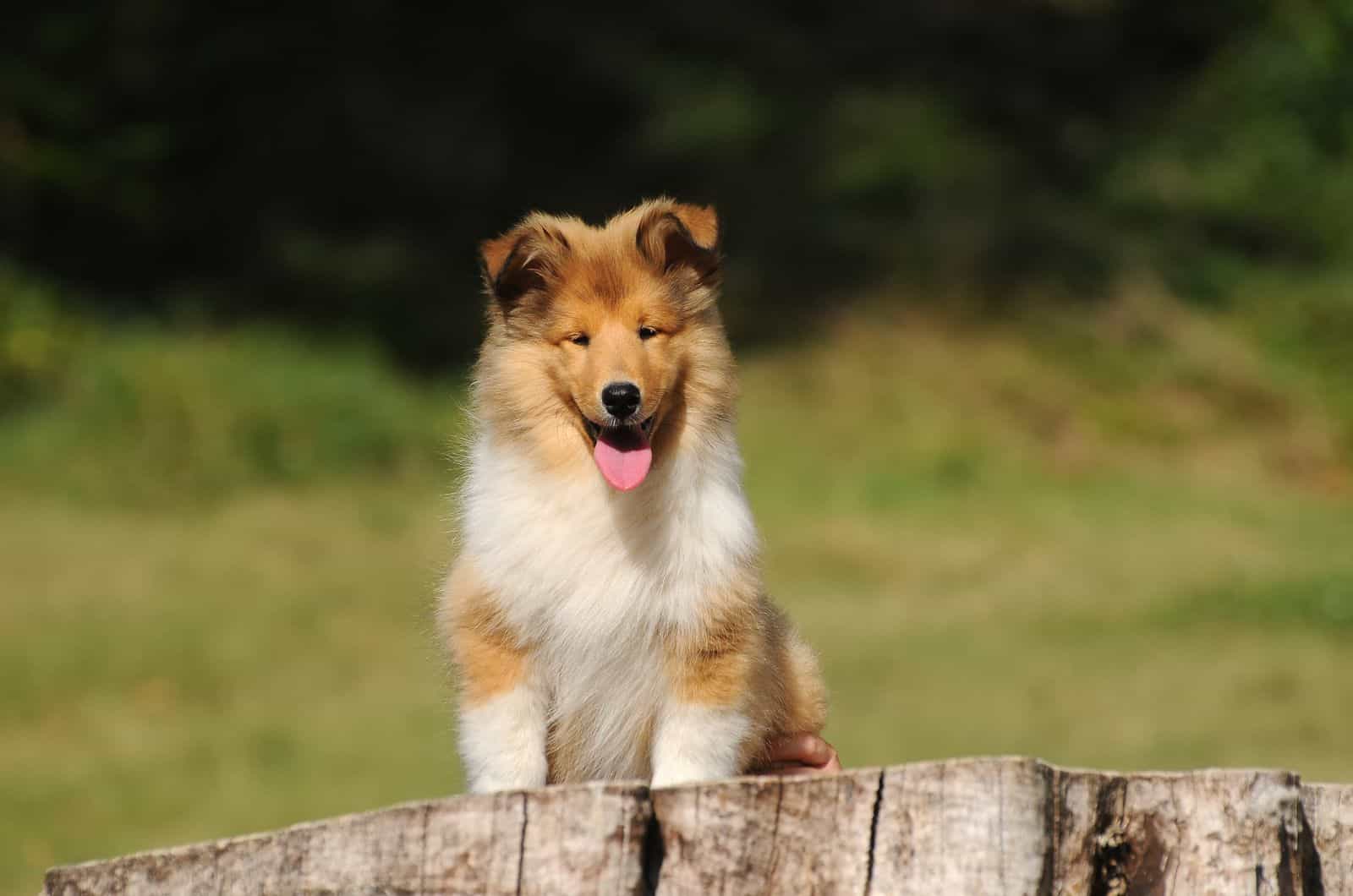
The body condition score can be used to determine whether your Collie is overweight, underweight, or at a healthy weight if you don’t keep track of your dog’s weekly weights. To apply this strategy, you need to have some skills.
Look at your dog closely and note which of its bones and other structures are poking out from under its skin, in order to determine its physical condition. Next, feel your dog with your hands for fat and bones.
You’ll learn your dog’s body condition score after completing this exercise. Scores for physical condition range from 1 to 9.
An underweight dog receives a score of 1 to 3. A dog is considered to be of ideal weight if its score falls between 4 and 5, and overweight if it rises beyond 5.
If your Collie appears to be overweight, consult your veterinarian.
Rough Collie Growth Chart FAQ
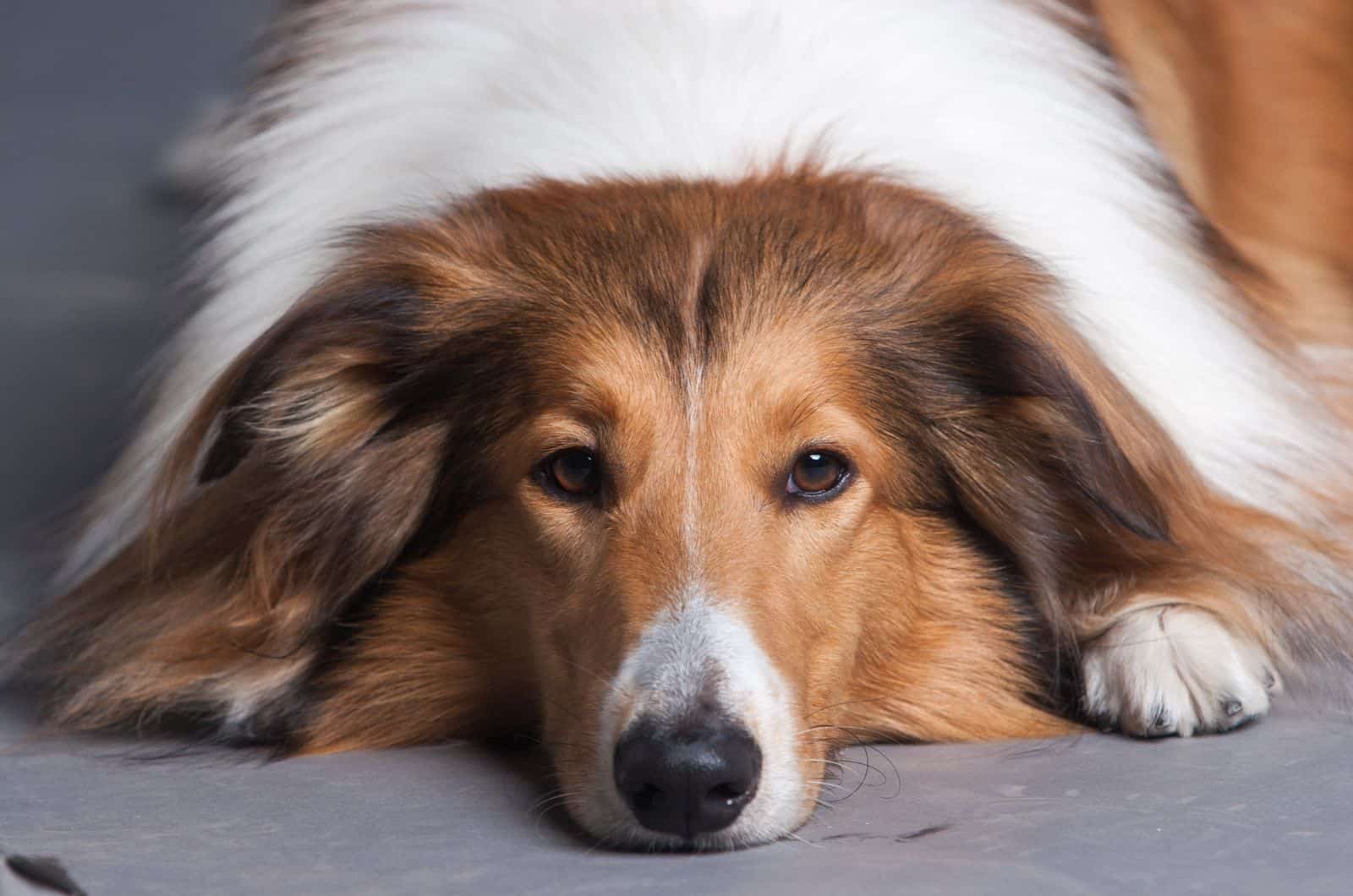
The following section of the Rough Collie growth chart article will be dedicated to some of the most frequently asked questions related to the topic at hand.
Some of these questions have already been answered in other parts of the article, but this can still serve as a quick and easy overview for people who don’t have the time to read the whole thing.
Other questions have not been covered previously and therefore they have been answered here in a little more detail in order to bring you all the info that you need.
Why Do I Need A Rough Collie Growth Chart?
One of the most vital aspects of dog ownership is keeping track of a puppy’s development during those critical early months.
By routinely weighing your puppy and using our Rough Collie growth chart as a sort of weight calculator, you can keep an eye on its development and make sure that its weight is increasing appropriately.
Not to mention all the other elements, such as its food, level of activity, training, etc., that demand your attention. You can plan your Rough Collie’s diet, living situation, and your spending by knowing how big and heavy it should be at a specific age.
How To Use The Rough Collie Growth Chart?
The Rough Collie growth chart is fairly easy to use.
All you need to do is regularly measure your Collie’s weight and then compare it to the values in the weight chart. This will give you an idea if your pup is on the right track when it comes to development.
If your Collie is lighter than the weight chart suggests, that probably means that you should either alter its diet or check with your vet to see if there are any potential health issues that might be causing it.
On the other hand, if your Collie is heavier than the weight chart says, you should probably cut down on the treats or amp up the exercise. Collies are prone to obesity issues so you should pay extra attention to this.
How To Measure The Weight Of A Rough Collie?
You can weigh your Collie using one of two techniques. Using a dog weighing scale is the first, best, and most accurate way to weigh your Collie.
If you want to regularly track your Collie’s growth and catch any abnormal growth early, using a dog scale is essential.
It will be simple for you to regularly weigh your Collie without any hassle if you have a scale that is designed specifically for that purpose. Especially if you combine it with our growth graph in order to check the development.
The second way is weighing yourself on a bathroom scale while holding your Collie, and then weighing yourself without your Collie on the same scale.
Then subtract your weight when not holding your Collie from your weight when you are.
However, keep in mind that this approach is not very exact, and it could be challenging for you to weigh your Collie using this method if it is really heavy or if it has a tendency to move around while being held.
How To Measure The Height Of A Rough Collie?
Your dog’s height is measured from the ground to the withers. The tallest part of your dog’s body is where the shoulder blades are closest to the withers.
Before setting the measuring tape on the ground and moving it straight up toward the withers, make sure your dog is standing straight.
There are typically two approaches you can use to do this.
Spread the tape measure out from the ground to the dog’s withers. Make sure there is no slack in the tape measure and that it is perfectly upright and perpendicular to the floor.
The other method of determining your dog’s height is to simply mark its withers on the wall or doorframe behind it with a pencil. Then you can move your dog and measure the distance from the pencil mark to the floor with a tape measure.
We have a more in-depth guide on dog measurement techniques in this article.
How Tall Is The Average Rough Collie?
According to the AKC’s breed standard, Rough Collie males typically stand between 24 and 36 inches tall, while adult females typically stand between 22 and 24 inches at the withers.
So, if we disregard gender for this example, then the average height span of a fully grown Rough Collie is between 22 and 26 inches.
For comparison, that is about the size of a Boxer.
What Is The Average Weight Of A Rough Collie?
When perfectly healthy and fit, adult Rough Collies should have a weight anywhere between 44 and 79 pounds, as you can see from the Rough Collie growth chart at the start of the article.
However, that range can vary between the two genders, because they grow at different rates.
Adult male Collies reach weights between 49 and 79 pounds, while females are between 44 and 79 pounds. That is a range relatively similar to that of the Chow Chow breed.
How Much Dog Food Should My Rough Collie Eat?
For an average Rough Collie dog, 1.75 to 2.5 cups of premium dry dog food, divided into two or three meals per day, is the recommended dietary intake.
If you’ve been feeding your pup the proper amount of dog food, but it still feels hungry all the time, it might be time to consult your vet.
Are Rough Collies Medium Or Large Dogs?
Rough Collies are generally considered to be a medium-sized dog breed. They are strong, agile, and athletic dogs whose working background has maintained them at a high level of fitness.
Additionally, they have that elegant, almost royal appearance that makes them so easily recognizable and so beloved across the world. It’s no wonder they chose Lassie for that show!
Conclusion
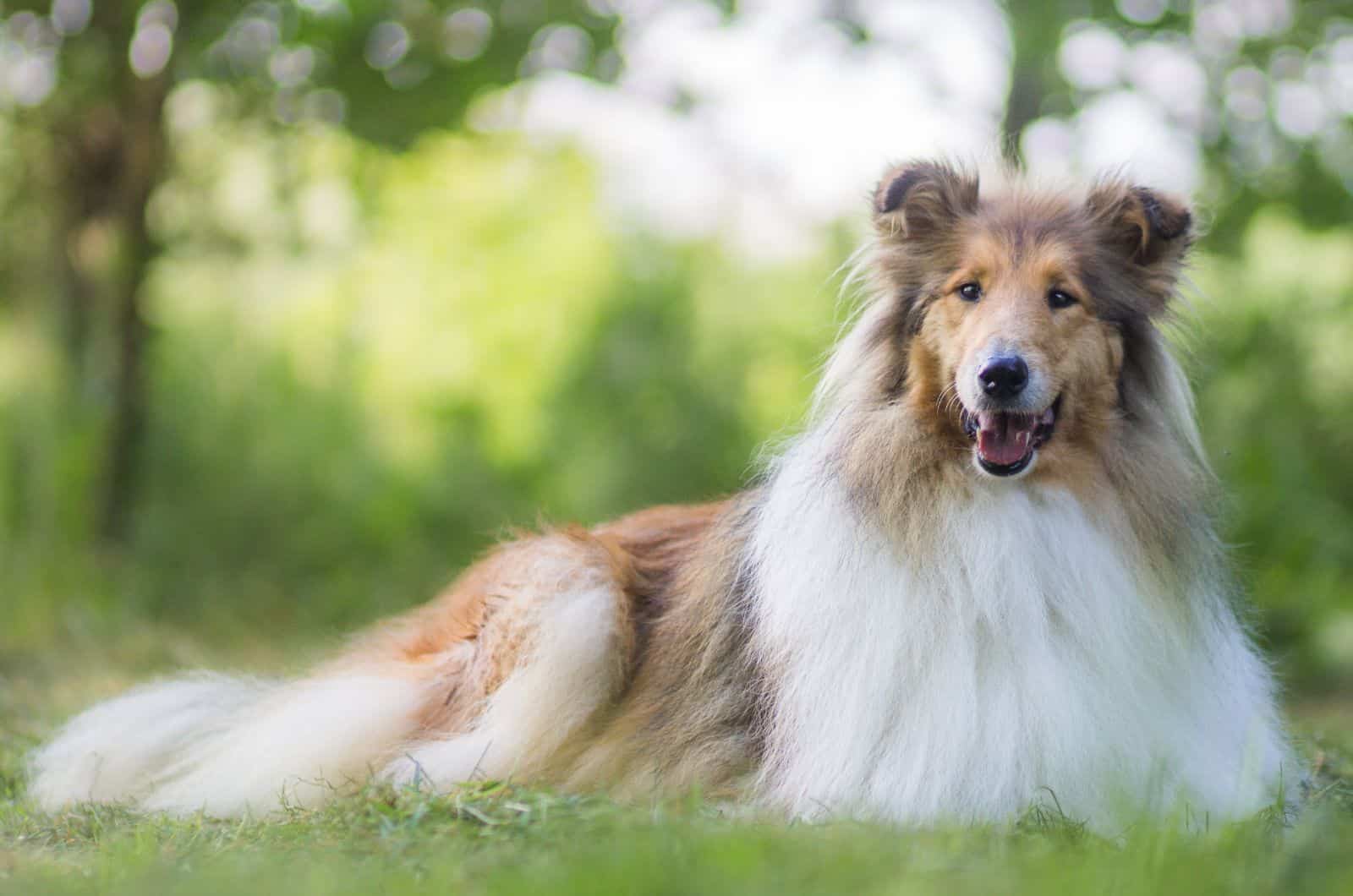
If you have one of these gorgeous dogs, the Rough Collie growth chart is an excellent resource to have.
You should educate yourself on Rough Collies before deciding to go to a breeder and adopt one. This way you will know what to expect. Knowing the dog’s size will help you decide what supplies, food, and care are required for it.
With the aid of this Rough Collie growth chart, you can easily keep tabs on your puppy’s development at any time by comparing the chart’s figures to your puppy’s actual weight and height.
You could use the Rough Collie growth chart to assist you in concentrating your efforts on improving your Collie’s health.
